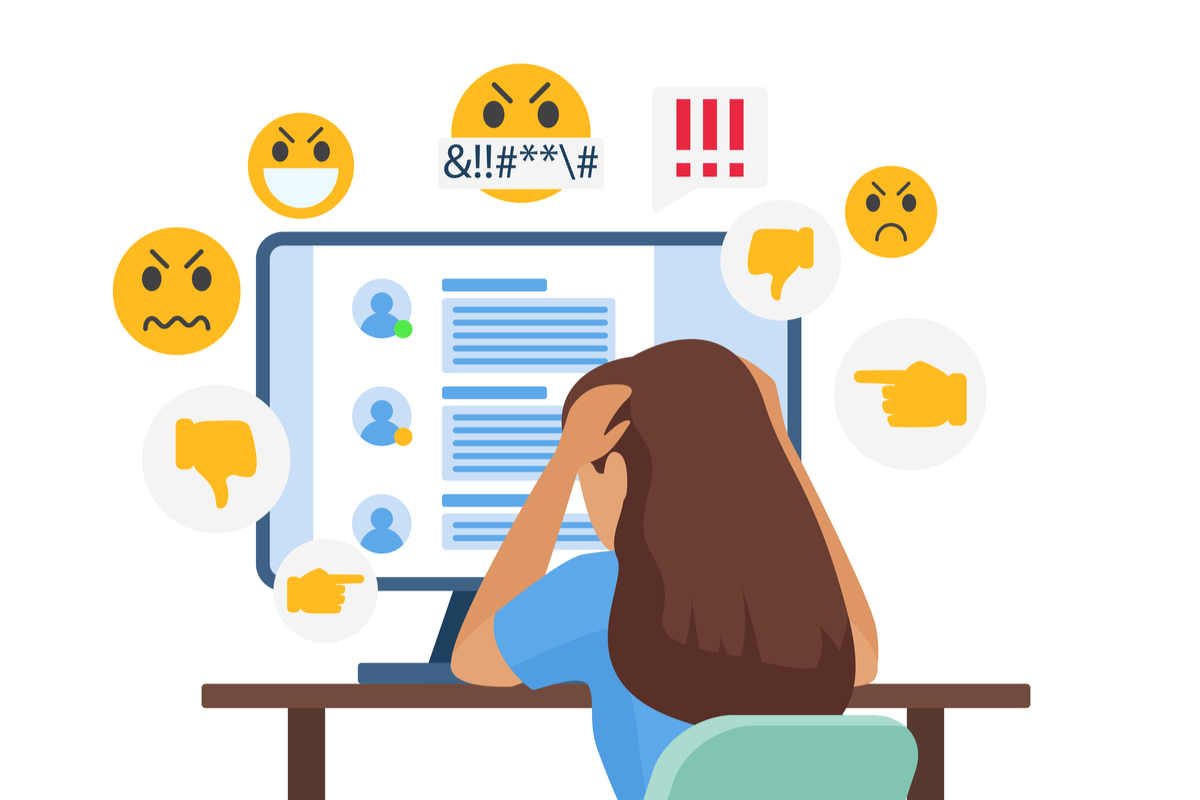Other Words for Trolling: A Comprehensive Guide
In today’s digital age, online communication has become an integral part of our lives. Whether it’s social media, forums, or comment sections, we all engage in online conversations. However, not all online interactions are pleasant. Sometimes, we encounter individuals who disrupt discussions with negative behavior. In this comprehensive guide, we will explore various synonyms and expressions for trolling, providing you with a toolbox to navigate the world of online communication effectively. Let’s embark on this journey to enhance your online experience.

Other Words for Trolling: A Comprehensive Guide
Trolling, often characterized by disruptive and inflammatory comments, can negatively impact online communities. To better understand and address trolling behavior, we’ll explore alternative terms that describe this phenomenon:
- Online Harassment: This term encompasses various forms of online abuse, including trolling.
- Cyberbullying: A more specific form of online harassment, involving repeated, targeted attacks.
- Flaming: Refers to aggressive and insulting comments meant to provoke others.
- Provocative Posting: Describes intentionally inciting reactions from others.
- Internet Agitator: Someone who stirs up controversy and discord online.
- Keyboard Warrior: A person who acts tough online but is passive in real life.
- Comment Section Chaos: The disruption caused by trolls in comment sections.
- Online Instigator: Someone who initiates conflicts in digital spaces.
- Disruptive Posting: Posting content that disrupts the flow of conversation.
- Social Media Saboteur: Individuals who sabotage discussions on social platforms.
- Forum Troublemaker: Refers to those who cause disruptions in online forums.
- Digital Heckler: Similar to a heckler at an event, but in a digital context.
- Mischief Maker: Individuals who create chaos for their amusement.
- Viral Disturber: Posting content to gain attention through disruption.
- Discussion Saboteur: Those who intentionally derail meaningful conversations.
- Net Nuisance: People who annoy others online with disruptive behavior.
- Trollish Antics: Referring to the actions and behavior of trolls.
- Social Media Aggressor: Individuals who aggressively target others online.
- Comment Thread Agitator: Stirring up conflicts within comment threads.
- Digital Trouble Catalyst: Initiating trouble and controversy online.
- Online Griefer: Creating grief and annoyance for others on the internet.
- Web Disruptor: Someone who disrupts the normal flow of web discussions.
- Chatroom Provoker: Stirring up emotions in online chatrooms.
- Discussion Hijacker: Taking over discussions for personal gain.
- Cyber Provocateur: Provoking reactions in the digital realm.
Now that we’ve explored various terms related to trolling, let’s delve deeper into this complex issue.
Understanding Trolling Behavior
Trolling behavior is not limited to a single definition; it takes on various forms and intensities. It’s essential to recognize the signs and understand the motives behind trolling:
- Motives Behind Trolling: Trolls may seek attention, express frustration, or simply enjoy causing chaos. Understanding their motives can help in dealing with them effectively.
- Identifying Trolling: Trolling can range from mild teasing to extreme harassment. Recognizing trolling behavior early allows for prompt action.
- Impact on Victims: Trolling can have serious emotional and psychological effects on victims. Empathy is crucial in supporting those affected.
- Dealing with Trolls: Strategies for dealing with trolls include ignoring them, reporting them to platform moderators, or engaging in constructive dialogue.

Identifying Trolling: Signs and Red Flags
Identifying trolling behavior is crucial for maintaining a positive online environment. Trolls often hide behind pseudonyms and seek to disrupt discussions or provoke emotional reactions. Here are some signs and red flags to help you spot trolling:
Signs of Trolling:
- Inflammatory Language: Trolls often use aggressive and offensive language to incite anger or frustration in others. They may resort to insults, slurs, or personal attacks.
- Off-Topic Comments: Trolls frequently steer conversations away from the topic at hand. They introduce unrelated content to derail meaningful discussions.
- Repetitive Posting: Trolls may spam the same comment or message repeatedly, flooding the discussion and hindering constructive dialogue.
- Excessive Emoticons or Capitals: Overuse of emoticons, excessive capitalization, or excessive punctuation marks (e.g., !!!) are signs of trolling behavior.
- Lack of Constructive Input: Trolls rarely contribute meaningful insights to discussions. Their comments lack substance and often serve to disrupt rather than add value.
Red Flags:
- Anonymity: Trolls often hide behind anonymous or pseudonymous profiles, making it challenging to track their behavior.
- Provocation: Trolls intentionally provoke emotional responses from others, seeking to create chaos and conflict.
- Consistent Negative Behavior: Consistent patterns of negative or disruptive behavior are a red flag. Trolls tend to exhibit this behavior across various platforms and discussions.
- Ignoring Reasoned Arguments: Trolls typically ignore well-reasoned arguments and continue their disruptive behavior.
- Changing Identities: Some trolls may switch identities or create multiple accounts to further disrupt discussions.

Supporting Trolling Victims
Trolling can have severe emotional and psychological effects on its victims. Providing support to those who have experienced trolling is essential for their well-being and for maintaining a healthy online community. Here’s how you can support trolling victims:
1. Encourage Open Communication:
Create a safe space where victims can share their experiences without judgment. Encourage them to express their feelings and concerns.
2. Offer Empathy and Understanding:
Listen to victims’ stories and show empathy. Understand that trolling can be emotionally distressing, and your support can make a significant difference.
3. Provide Resources:
Share resources such as online helplines, support groups, or mental health services that can help victims cope with the emotional aftermath of trolling.
4. Report and Block Trolls:
Assist victims in reporting and blocking trolls to prevent further harassment. Explain how to use platform tools effectively.
5. Promote Positivity:
Encourage victims to focus on positive aspects of online interactions. Highlight the supportive and constructive side of online communities.
6. Document Harassment:
Advise victims to document instances of trolling, including screenshots and timestamps. This documentation can be useful when reporting the behavior.
7. Seek Legal Recourse:
In extreme cases, where trolling involves threats or harassment, victims may consider seeking legal assistance or filing a police report.
FAQs
Q: How can I differentiate between harmless humor and trolling?
A: Trolling often involves hurtful or offensive comments intended to provoke. Humor, on the other hand, is light-hearted and not meant to harm.
Q: What should I do if I encounter a troll online?
A: Ignore, block, or report the troll. Engaging with them can often fuel their behavior.
Q: Are there legal consequences for trolling?
A: Depending on the severity, trolling can lead to legal consequences, including harassment charges.
Q: Can trolls change their behavior?
A: Some trolls may reform with education and empathy, but not all will change.
Q: How can online platforms combat trolling?
A: Platforms can implement strict guidelines, employ moderators, and provide tools for reporting and blocking trolls.
Q: Is trolling always harmful?
A: While some trolling may be harmless jokes, it often crosses a line and becomes hurtful or abusive.
Conclusion
In this comprehensive guide, we’ve explored the many facets of trolling and provided alternative terms to describe this behavior. Understanding trolling is essential for creating a safer and more enjoyable online environment. Remember, while trolls may thrive on negative attention, fostering a positive and respectful online community is a collective effort. By recognizing trolling behavior and responding appropriately, we can ensure that the digital world remains a place where constructive discussions can thrive.







